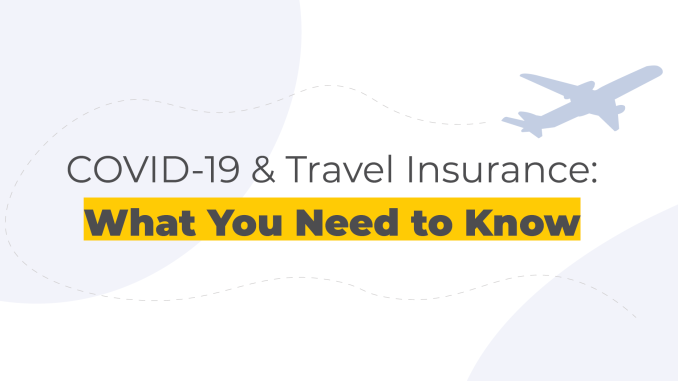
In the wake of the global pandemic, the question of whether travel insurance covers COVID-19 has become a top concern for travelers, insurers, and businesses alike. The uncertainty surrounding the virus’s impact on travel plans has challenged the traditional landscape of travel insurance, forcing both consumers and providers to rethink what coverage means in a world still grappling with a persistent health threat. Understanding how travel insurance policies address COVID-19 requires delving into the nuances of coverage, exclusions, and evolving industry standards. This insight can help travelers make informed decisions, balancing protection with realistic expectations.
At the core, travel insurance has always been designed to safeguard travelers against unforeseen disruptions—medical emergencies, trip cancellations, lost baggage, and other risks that can spoil a vacation or business trip. When the pandemic emerged, it disrupted every facet of global mobility, introducing a novel risk: illness and travel interruption due to COVID-19. Initially, many insurance providers excluded pandemics from their coverage, classifying them as “known risks” or “acts of God” beyond the scope of traditional policies. This meant that if a traveler contracted COVID-19 or if their trip was canceled due to pandemic-related restrictions, standard travel insurance might not offer reimbursement.
However, as the world adjusted to living with COVID-19, the insurance industry began adapting. Many providers introduced specific endorsements or separate COVID-19 coverage as part of their travel insurance offerings. These adaptations acknowledge that pandemics can no longer be viewed as once-in-a-century events but as ongoing considerations in risk management. Today, most comprehensive travel insurance policies include some level of COVID-19 coverage, but the extent and conditions vary widely.
One of the primary ways COVID-19 is covered is under the medical expenses portion of travel insurance. If a traveler contracts the virus while on a trip, many policies now cover hospitalization, medical treatment, and sometimes quarantine-related expenses. For example, if someone traveling abroad tests positive and needs emergency care or extended accommodation due to quarantine requirements, the insurance can reimburse these costs up to the policy’s limits. This coverage can be a financial lifesaver, especially in countries where medical treatment is costly or where unexpected isolation can balloon accommodation expenses.
On the other hand, coverage for trip cancellations or interruptions due to COVID-19 is more complex and often contingent on the policy’s terms. If a traveler tests positive before departure and must cancel their trip, some insurers will cover non-refundable expenses like flights and hotels. However, cancellations due to government travel bans or changes in quarantine regulations may not always be reimbursed unless the policy explicitly includes such scenarios. For instance, a traveler planning a trip to a destination that suddenly imposes strict entry restrictions may find that their insurance does not cover the loss unless they purchased a “cancel for any reason” (CFAR) upgrade or a policy with pandemic-specific clauses.
This variability means it’s critical for travelers to carefully read the fine print and ask insurers directly about their COVID-19 coverage. Coverage terms can differ not only by provider but also by the region and type of plan. Some policies might limit coverage to travelers who have received COVID-19 vaccinations or require proof of testing before travel. Others may exclude coverage if the traveler knowingly departs for a destination with active travel advisories or mandatory quarantines. Understanding these nuances helps avoid unpleasant surprises and enables travelers to select policies aligned with their travel circumstances.
Beyond individual travelers, businesses and corporate travel managers are also navigating this new terrain. Companies sending employees overseas must consider whether their travel insurance policies adequately cover COVID-19 risks, including medical emergencies and trip disruptions. The stakes are high, as gaps in coverage can translate into substantial out-of-pocket expenses and operational setbacks. Consequently, many businesses are working closely with insurance brokers to secure tailored policies that address pandemic-related contingencies while balancing cost and coverage comprehensiveness.
The evolution of travel insurance in response to COVID-19 also reflects broader shifts in consumer expectations and technological innovation. Travelers now demand more flexible and transparent policies that offer protection against a wider array of uncertainties. Insurers have responded by offering digital platforms that streamline claims processing for COVID-19-related incidents and providing clearer communication about coverage boundaries. This transparency fosters trust and empowers travelers to make smarter choices.
An illustrative example comes from the resurgence of travel in 2023 and beyond, where travelers increasingly opted for policies with explicit COVID-19 protections. A couple planning their honeymoon in Europe, for instance, might prioritize an insurance plan that covers quarantine hotel stays and provides reimbursement if one partner tests positive before departure. This level of protection not only offers peace of mind but also supports better financial planning amid unpredictable travel conditions.
In conclusion, while travel insurance today often includes some coverage for COVID-19, the specifics can vary widely. Medical expenses related to the virus are commonly covered, but cancellation and interruption benefits depend heavily on policy language and additional endorsements. As the pandemic continues to influence global travel, understanding these details is crucial for anyone purchasing insurance. Travelers should approach policies with a discerning eye, seek clarity from providers, and consider their own health status, destination risks, and flexibility needs. By doing so, they can better navigate the evolving insurance landscape and protect themselves against the unexpected, ensuring that the dream of travel remains accessible and secure—even in the face of a global health challenge.